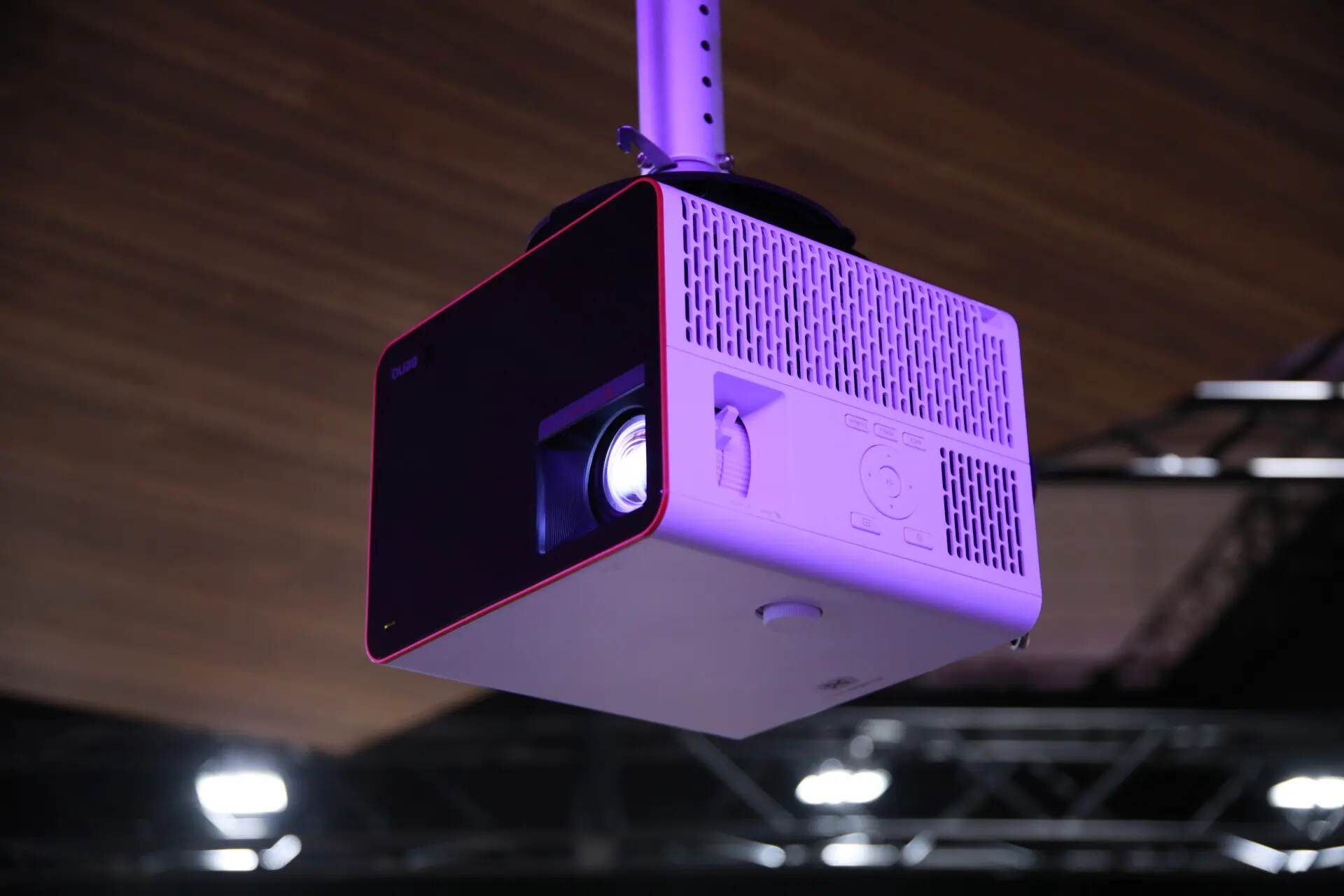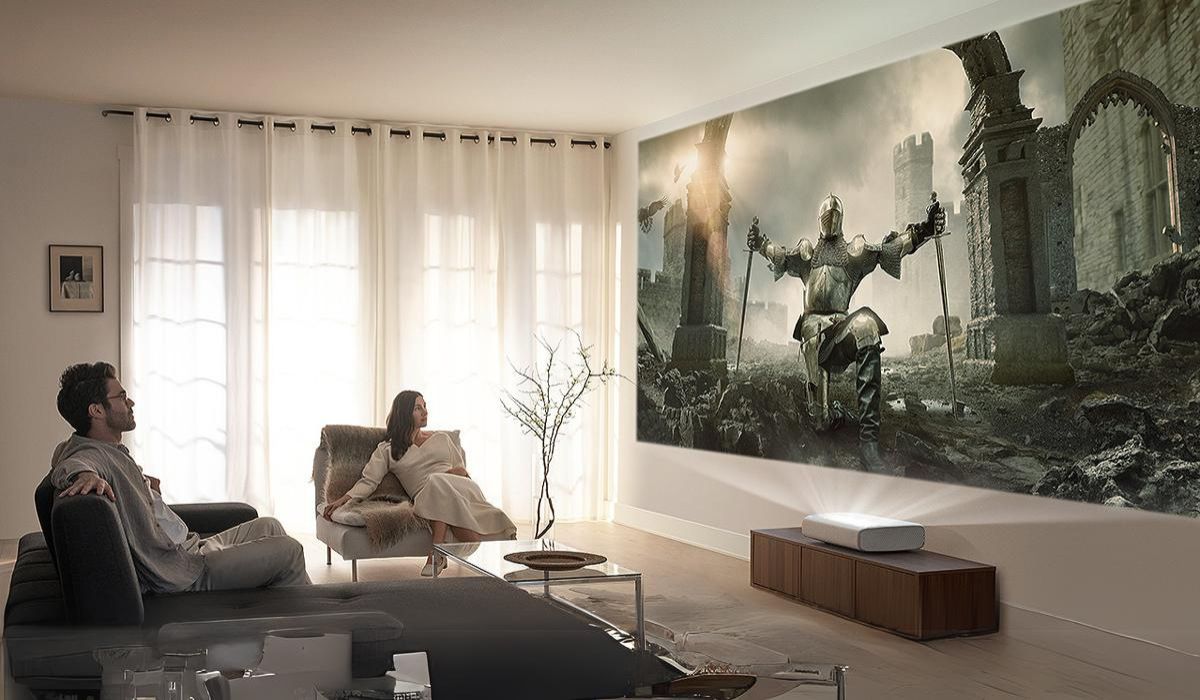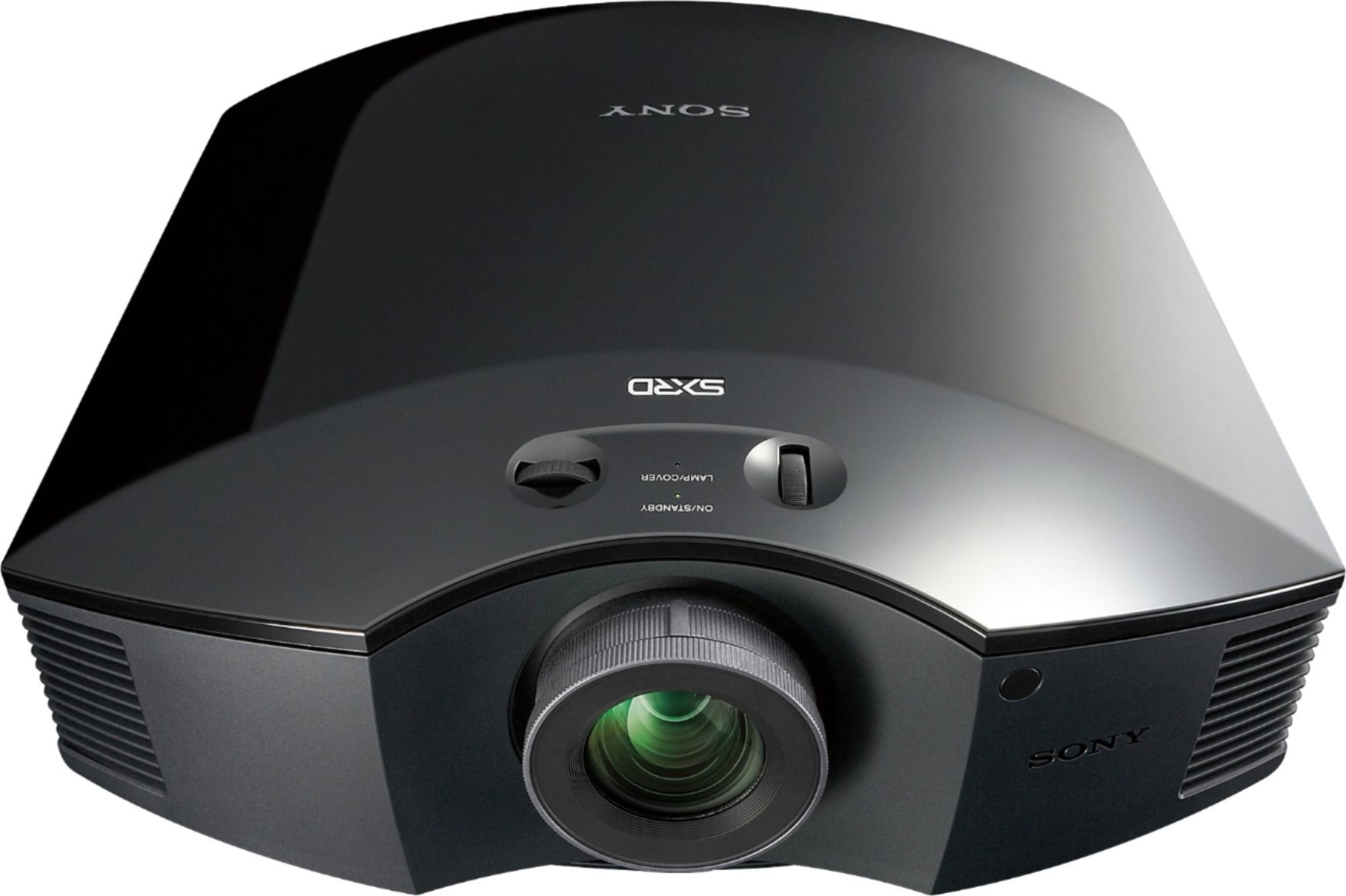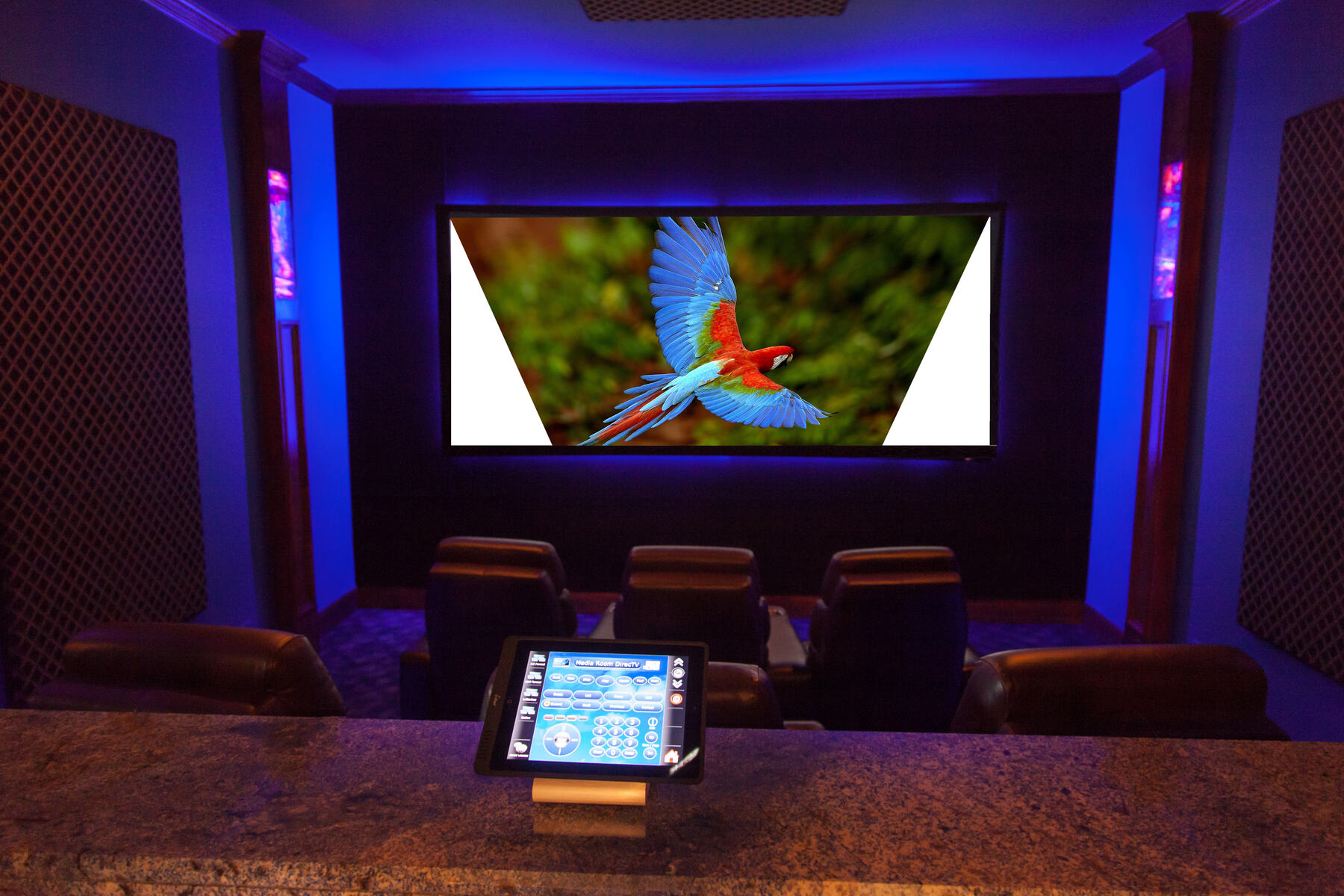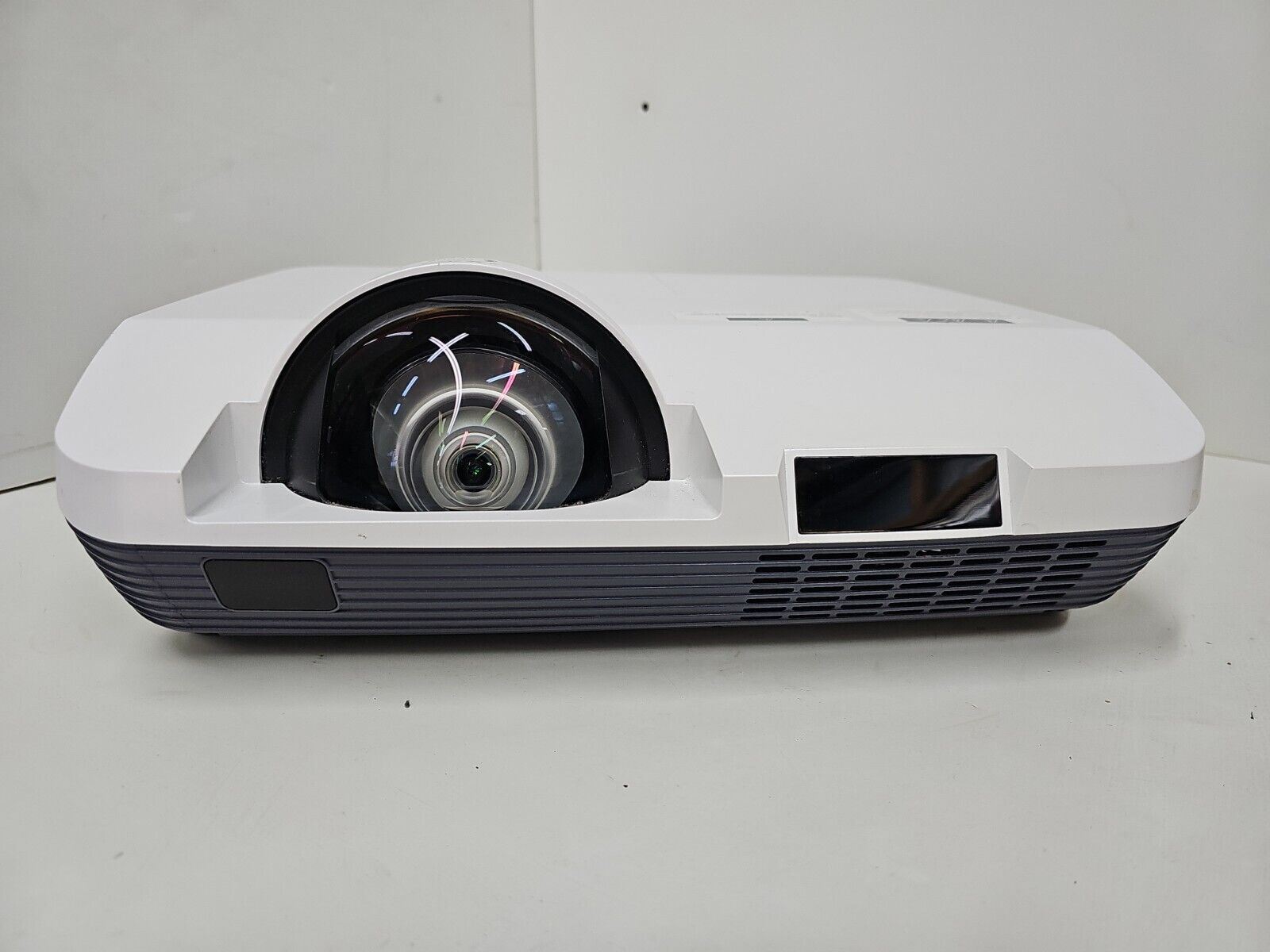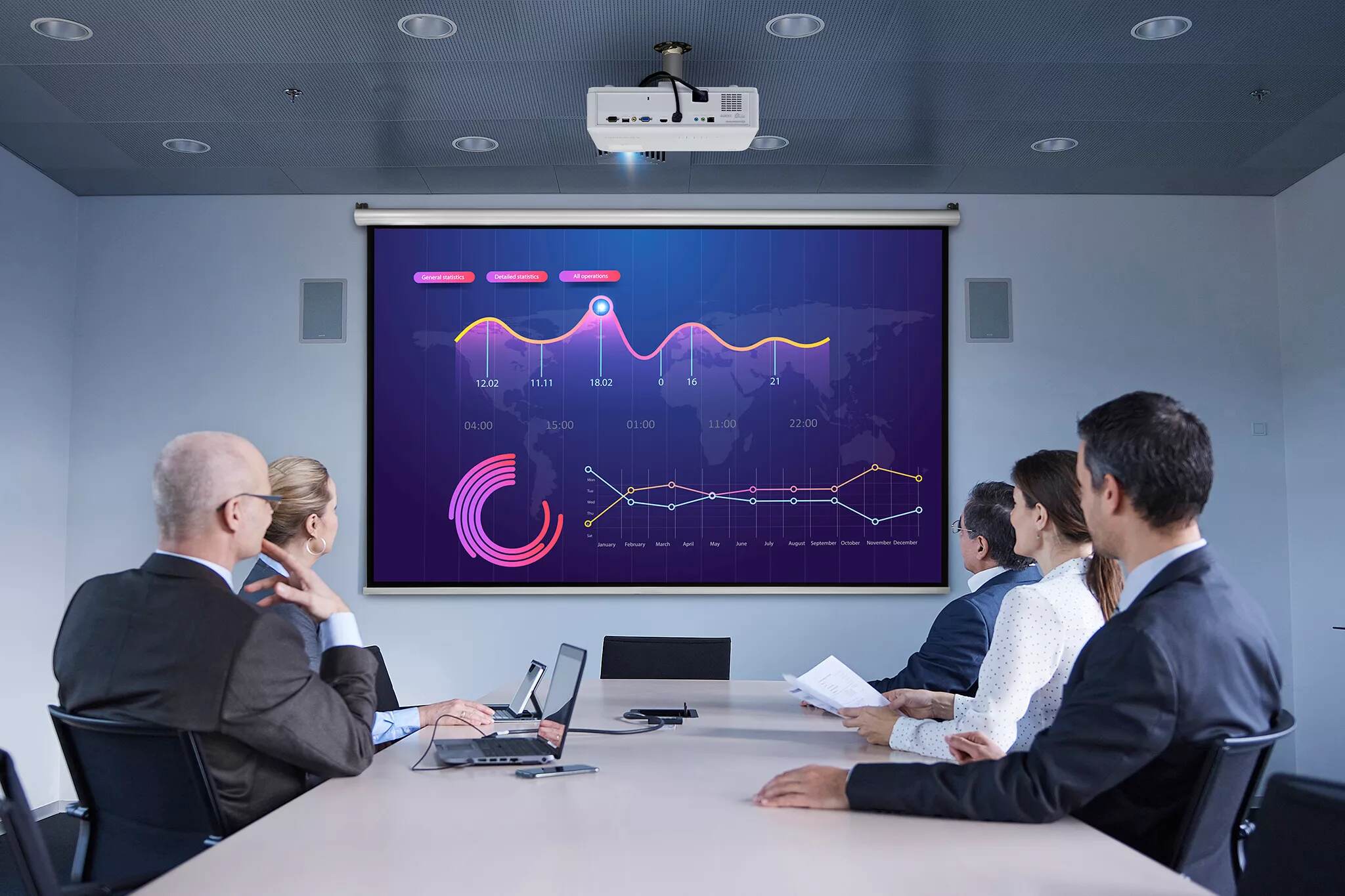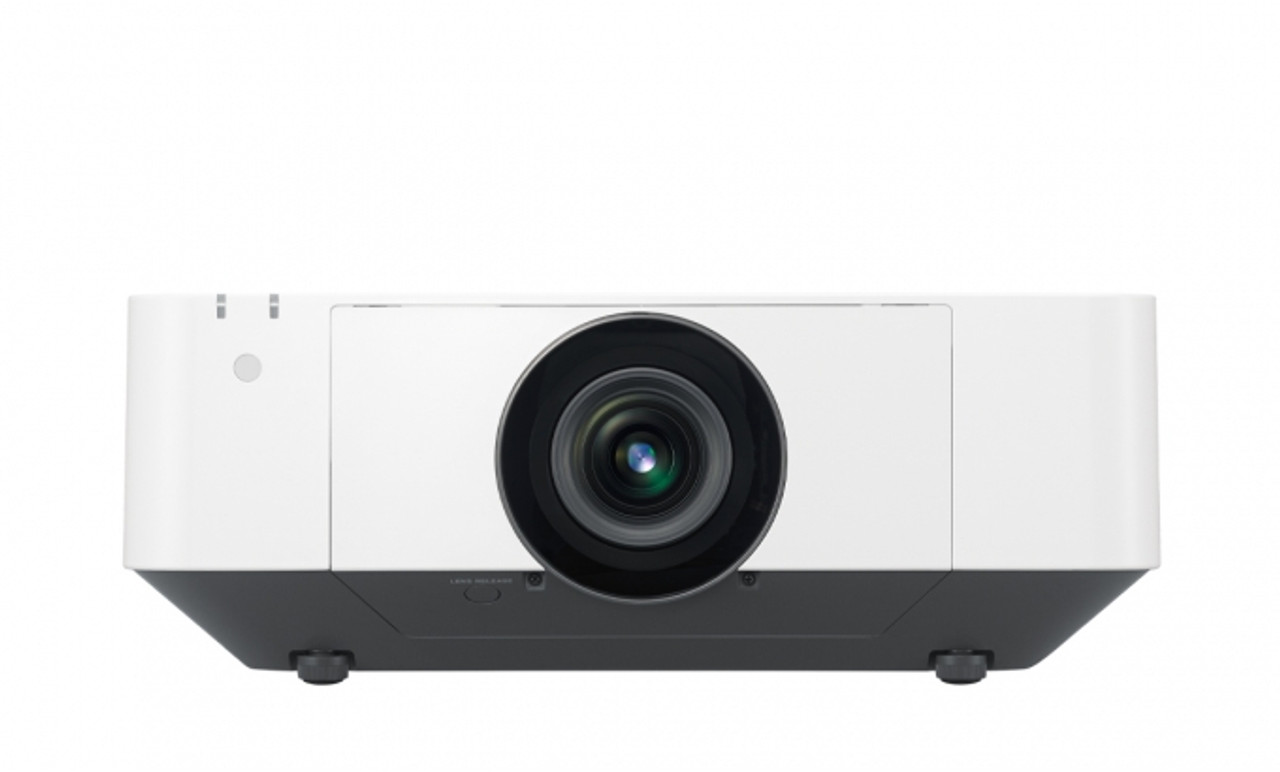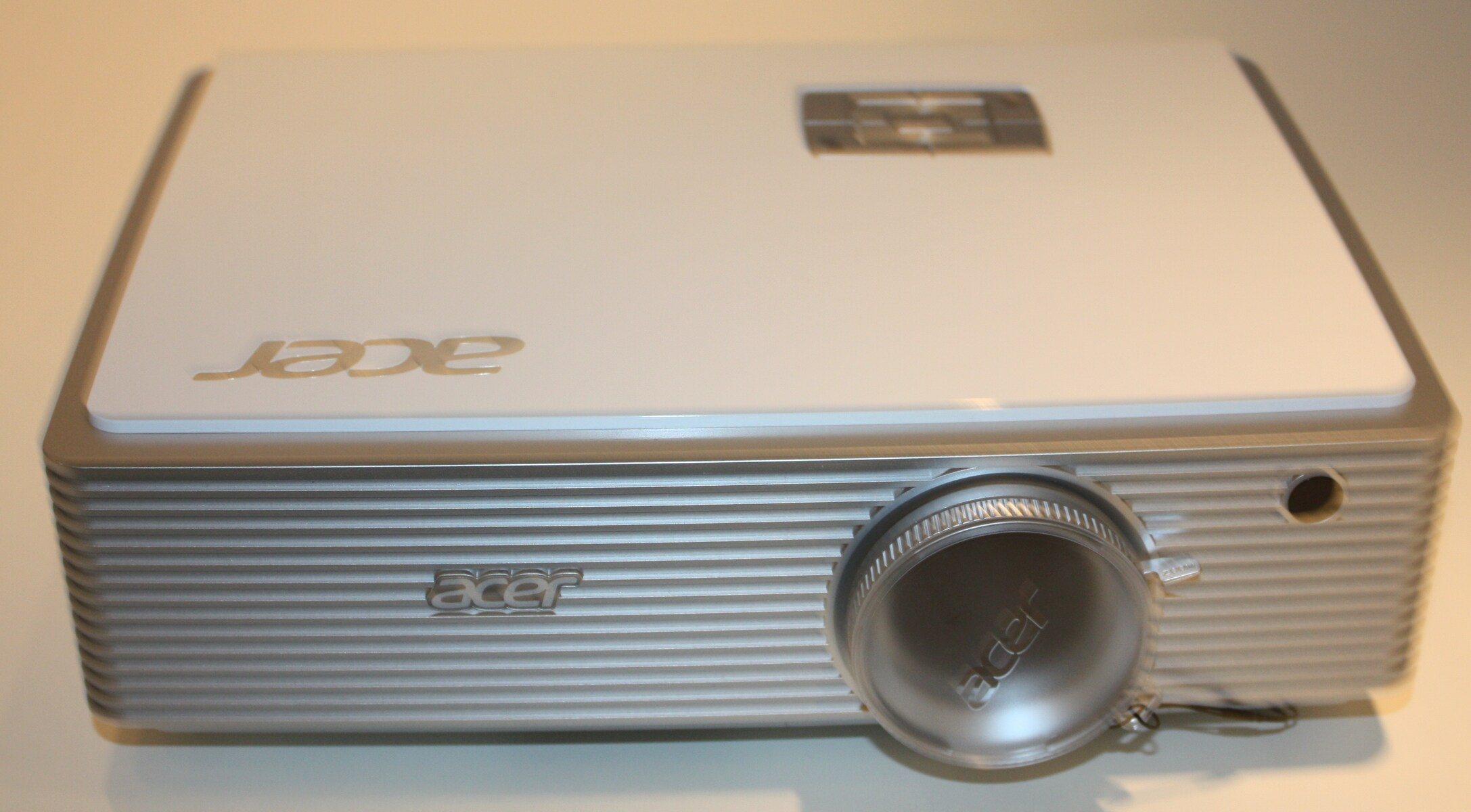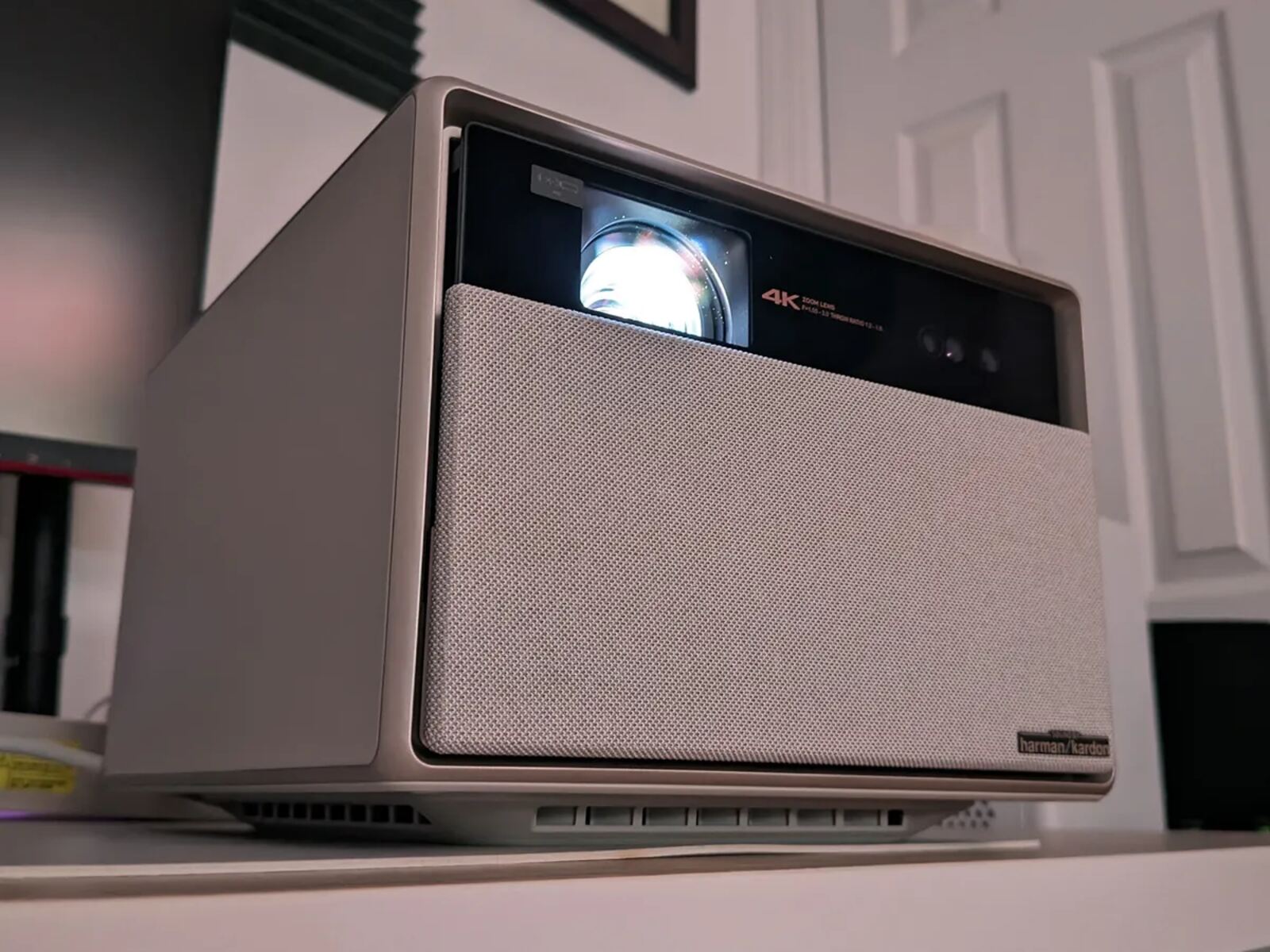Introduction
Welcome to the world of projectors, where high-quality images and immersive viewing experiences come to life. When it comes to setting up a projector, one important aspect to consider is the projector lens shift feature. Projector lens shift is a versatile tool that allows you to adjust the position of the projected image without physically moving the projector itself.
Whether you are a home theater enthusiast or a professional presenter, understanding projector lens shift can greatly enhance your viewing experience. In this article, we will delve into the concept of projector lens shift, its benefits, considerations when using it, and potential limitations.
Before we dive in, it is important to note that projector lens shift is a feature primarily found in higher-end projectors. While it may not be available in all models, it is worth exploring if you are looking for more flexibility in projector placement and image alignment.
Now, let’s embark on a journey to uncover the wonders of projector lens shift.
What is Projector Lens Shift?
Projector lens shift is a unique feature that allows you to adjust the position of the projected image on the screen without physically moving the projector itself. It provides greater flexibility in projector placement, making it easier to achieve the desired image alignment and optimal viewing experience.
Typically, when you position a projector, the image is projected straight ahead, resulting in the need to tilt or adjust the projector vertically or horizontally to align the image properly on the screen. This adjustment process can be time-consuming and may lead to keystone distortion, where the projector is tilted at an angle, causing the projected image to appear trapezoidal.
However, with lens shift, you can overcome these challenges. It works by utilizing the optical system in the projector to shift the image vertically or horizontally, without compromising image quality. This means that regardless of the projector’s position, whether it is mounted on the ceiling, placed on a shelf, or positioned off-center, you can easily adjust the image to fit the screen perfectly.
It is important to note that lens shift is different from digital keystone correction. While both features aim to correct image distortion, lens shift provides a more precise adjustment by physically shifting the image, whereas keystone correction digitally adjusts the image to make it appear rectangular. Lens shift preserves image quality, while keystone correction may introduce slight image degradation.
This advanced feature is particularly useful in home theater setups, conference rooms, classrooms, and professional installations, where the projector’s position may need to be adjusted based on the room layout or seating arrangements. With lens shift, you can achieve a perfectly aligned, distortion-free image, allowing everyone in the audience to enjoy a visually engaging and immersive experience.
Now that we have defined projector lens shift, let’s explore how it works and the benefits it offers.
How Does Projector Lens Shift Work?
Projector lens shift works through the manipulation of the projector’s lens system. The optical design of the lens allows for the adjustment of the position of the projected image, both vertically and horizontally, without compromising image quality. This feature is typically controlled through the projector’s menu settings or remote control.
Vertically, lens shift allows you to move the projected image up or down on the screen. This is especially beneficial when you need to position the projector above or below the screen, such as when mounted on the ceiling or placed on a low shelf. By adjusting the lens vertically, you can maintain a proper alignment, preventing the need for tilting the projector and avoiding keystone distortion.
Horizontally, lens shift enables you to shift the projected image to the left or right, accommodating various installation scenarios. This can be useful when the projector needs to be placed off-center due to room layout or placement constraints. By adjusting the lens horizontally, you can ensure that the image is perfectly aligned with the screen, regardless of the projector’s position.
It is important to note that the amount of adjustment available through lens shift varies among projectors. Some models offer a wide range of adjustment, allowing for significant shifts both vertically and horizontally, while others may have more limited adjustment capabilities. Before purchasing a projector, it is advisable to check its lens shift specifications to ensure it meets your specific needs.
When using lens shift, it is essential to maintain the correct aspect ratio of the image to avoid distortion. Most projectors provide options for adjusting the aspect ratio, either manually or automatically, to match the content being displayed. This ensures that the projected image maintains its intended proportions and appearance, regardless of any adjustments made through lens shift.
Overall, projector lens shift is a remarkable feature that enhances the versatility and usability of projectors. It allows for seamless adjustment of the projected image, both vertically and horizontally, resulting in effortless alignment and better image quality. Whether you are setting up a home theater system or delivering a presentation, lens shift provides you with the flexibility to position your projector in the most convenient way while still achieving an optimal viewing experience.
Benefits of Using Lens Shift
Using lens shift on a projector offers numerous benefits that contribute to an enhanced viewing experience and more convenient installation. Let’s explore some of the key advantages of utilizing lens shift:
- Flexible projector placement: Lens shift allows you to position your projector in various locations without compromising image quality. Whether you need to mount the projector on the ceiling, place it on a shelf, or position it off-center, lens shift enables you to easily adjust the projected image to fit the screen perfectly.
- Keystone correction avoidance: Keystone distortion can occur when a projector is tilted vertically or horizontally, resulting in a trapezoidal image. By using lens shift, you can avoid this issue altogether. Instead of tilting the projector, you can simply adjust the lens shift settings to align the image properly on the screen, maintaining a rectangular shape and preventing any image distortion.
- Preservation of image quality: Unlike digital keystone correction, which may introduce slight image degradation, lens shift preserves the image quality. By physically shifting the projected image using the optical lens system, lens shift allows for precise adjustments without compromising clarity, sharpness, or color accuracy.
- Convenient setup and adjustment: Lens shift provides a hassle-free setup process and easy adjustments. Instead of physically moving and readjusting the projector, you can quickly and conveniently tweak the position of the projected image through the projector’s menu settings or remote control. This saves time and effort, especially in situations where precise placement is required.
- Improved viewing angles: Lens shift helps improve the viewing angles for all audience members. By adjusting the image vertically or horizontally, you can ensure that the projected content is easily visible to everyone, regardless of their seating position or the projector’s location.
These benefits make lens shift a valuable feature for various applications, including home theaters, conference rooms, classrooms, and professional installations. It provides greater flexibility, ease of use, and image quality optimization, ultimately enhancing the overall viewing experience.
Considerations When Using Lens Shift
While lens shift is a convenient and effective feature for adjusting the position of the projected image, there are a few considerations to keep in mind when using this functionality:
- Range of adjustment: The amount of adjustment available through lens shift can vary among projectors. Before purchasing a projector, it is essential to check the specifications and understand the range of lens shift capabilities it offers. Ensure that the available adjustment range meets your specific installation requirements.
- Aspect ratio compatibility: When using lens shift, be mindful of the aspect ratio of the content being projected. It is important to ensure that the projector is set to the correct aspect ratio to avoid any distortion. Some projectors may have automatic aspect ratio detection, while others may require manual adjustment. Ensuring the proper aspect ratio helps maintain the intended proportions of the content.
- Lens shift limitations: While lens shift is a versatile feature, it does have its limitations. It cannot overcome extreme angles or distances between the projector and the screen. If your installation requires significant adjustments that exceed the capabilities of lens shift, you may need to consider alternative solutions, such as keystone correction or longer throw lenses.
- Image quality: Although lens shift preserves image quality, it is important to note that any adjustments made through lens shift can have a slight impact on image sharpness and brightness. While these changes may be minimal, it is advisable to double-check the image quality after making adjustments, and if necessary, fine-tune other settings such as focus and brightness.
- Installation planning: When utilizing lens shift, proper installation planning is crucial. It is important to measure and consider the dimensions of your space, the distance between the projector and the screen, and any obstructions that may affect the range of adjustment. Taking these factors into account during the planning stage will help ensure optimal image alignment and an overall seamless installation.
By keeping these considerations in mind, you can effectively utilize lens shift to achieve the desired image placement and optimize your projector setup for the best viewing experience.
Understanding Vertical Lens Shift
Vertical lens shift is a crucial component of projector lens shift functionality. It allows you to adjust the position of the projected image vertically on the screen without physically moving the projector itself. This feature provides flexibility in projector placement and ensures precise alignment of the image.
When using vertical lens shift, there are a few key factors to consider:
- Range of adjustment: The range of vertical adjustment available through lens shift will vary depending on the specific projector model. It is important to check the specifications of your projector to understand the vertical shift capabilities it offers. The range can typically be expressed as a percentage or as a measurement in terms of screen height. Understanding the range of adjustment will help determine if the projector can be positioned above or below the screen while still achieving the desired image placement.
- Projection method: Vertical lens shift works by adjusting the position of the projected image in relation to the projector’s lens. This means that the image can be shifted up or down on the screen without tilting or angling the projector itself. This is particularly useful when the projector needs to be mounted on the ceiling or placed on a shelf, as it allows for easy alignment of the image with the screen without any keystone distortion.
- Keystone correction: While vertical lens shift eliminates the need for keystone correction in most cases, it is still important to understand its relationship to keystone correction. Keystone correction digitally adjusts the image to correct any trapezoidal distortion caused by tilting the projector. However, if the projector is positioned correctly using vertical lens shift, keystone correction may not be necessary. This can help preserve image quality and avoid any potential image degradation that may occur with keystone correction.
- Aspect ratio consideration: Proper aspect ratio is essential when using vertical lens shift. Adjusting the vertical lens shift settings can affect the image’s dimensions, so it is important to ensure that the projector’s aspect ratio matches the content being projected. This ensures that the image maintains its intended proportions and appearance on the screen.
Vertical lens shift is a useful feature for various scenarios, including ceiling-mounted projectors, installations with limited projector placement options, or setups that require specific image alignment. It provides the flexibility to position the projector without compromising the image quality or resorting to keystone correction. By understanding and utilizing vertical lens shift effectively, you can achieve seamless image placement and optimal viewing experience.
Understanding Horizontal Lens Shift
Horizontal lens shift is an important aspect of projector lens shift functionality that allows you to adjust the position of the projected image horizontally on the screen without physically moving the projector. This feature provides flexibility in projector placement and ensures precise alignment of the image.
Here are some key points to consider when it comes to understanding horizontal lens shift:
- Range of adjustment: The range of horizontal adjustment available through lens shift will vary based on the specific projector model. It’s essential to check the projector’s specifications to understand its horizontal shift capabilities. The range is typically given as a percentage or as a measurement in terms of screen width. Knowing the range of adjustment will help determine if the projector can be positioned off-center while still achieving the desired image placement.
- Projection flexibility: Horizontal lens shift is particularly useful when you need to position the projector to the left or right of the screen’s center. It allows you to easily adjust the projected image horizontally without the need for physically moving or angling the projector. This flexibility is beneficial in situations where the room layout or installation constraints require the projector to be placed off-center.
- Alignment with screen: Horizontal lens shift ensures that the projected image aligns perfectly with the screen, regardless of the projector’s position. By shifting the image horizontally, you can avoid keystone distortion and maintain a rectangular-shaped image. This is especially important in professional setups, such as conference rooms or lecture halls, where precise image alignment is crucial.
- Aspect ratio consideration: Similar to vertical lens shift, proper aspect ratio is vital when using horizontal lens shift. Adjusting the horizontal lens shift settings can affect the proportions of the image, so it’s essential to ensure that the projector’s aspect ratio matches the content being projected. This helps maintain the intended appearance of the image and avoids any distortion.
Horizontal lens shift provides enhanced placement flexibility for projectors in various scenarios, such as installations with limited space or requirements for specific image alignment. It allows you to position the projector off-center without sacrificing the image quality or relying on digital adjustments like keystone correction. By understanding and utilizing horizontal lens shift effectively, you can achieve precise image placement and optimize your viewing experience.
Potential Limitations of Lens Shift
While lens shift is a valuable feature for adjusting the position of the projected image, it does have some potential limitations to be aware of. Understanding these limitations can help you make informed decisions and ensure optimal usage of lens shift:
- Range of adjustment: The range of adjustment available through lens shift may be limited on certain projector models. Before purchasing a projector, it’s important to check the specifications and ensure that the available adjustment range meets your specific needs. If your installation requires significant adjustments that exceed the capabilities of lens shift, alternative solutions like different lens options or additional mounting equipment may be necessary.
- Extreme angles: Lens shift has its limitations when it comes to extreme angles. If the projector needs to be placed at a very high or low angle, or if there is a significant distance between the projector and the screen, lens shift may not be able to compensate for the required adjustments. In such cases, using alternate methods like digital keystone correction or adjusting the projector placement may be necessary.
- Image quality and brightness: While lens shift generally maintains image quality, it’s important to note that the shift may have a minimal impact on sharpness and brightness. The farther the image is shifted, the greater the potential for slight changes in image clarity and brightness. After making adjustments with lens shift, it’s advisable to review the image quality and make any necessary fine-tuning of other settings such as focus or brightness to ensure optimal viewing experience.
- Physical limitations: Lens shift relies on the design and mechanics of the projector’s lens system. In some cases, the size or weight of the lens or the internal components may restrict the range or capabilities of lens shift. For larger or heavier projectors, the available lens shift adjustment may be more limited compared to smaller or lightweight models. It’s advisable to consult the manufacturer’s specifications or seek professional advice to ensure the lens shift functionality aligns with your specific requirements.
By keeping these potential limitations in mind, you can effectively manage your expectations and choose the right projector and installation setup. It’s important to thoroughly research and assess your specific needs to determine if lens shift is suitable for your intended application or if alternative solutions should be considered.
Conclusion
Projector lens shift is a valuable feature that offers flexibility and convenience when it comes to adjusting the position of the projected image. Whether it’s vertical lens shift to accommodate ceiling-mounted or low-shelf projectors, or horizontal lens shift to align the image with the screen, this functionality provides precise adjustments without compromising image quality.
By utilizing lens shift, you can avoid keystone distortion and maintain a rectangular-shaped image, resulting in a more immersive viewing experience. The ability to fine-tune the image placement without physically moving the projector saves time and effort, making it an ideal solution for various installations, including home theaters, conference rooms, and classrooms.
However, it’s important to consider the potential limitations of lens shift, such as the range of adjustment, extreme angles, and the impact on image quality and brightness. Understanding these limitations helps to manage expectations and make informed decisions about projector selection and installation planning.
In conclusion, projector lens shift is a powerful tool to optimize projector placement and achieve precise image alignment without compromising quality. By understanding how lens shift works and considering its benefits and limitations, you can make the most of this feature and enjoy a seamless projection experience.







